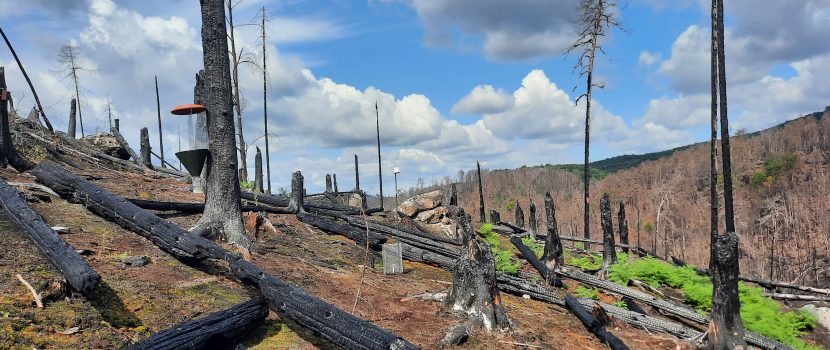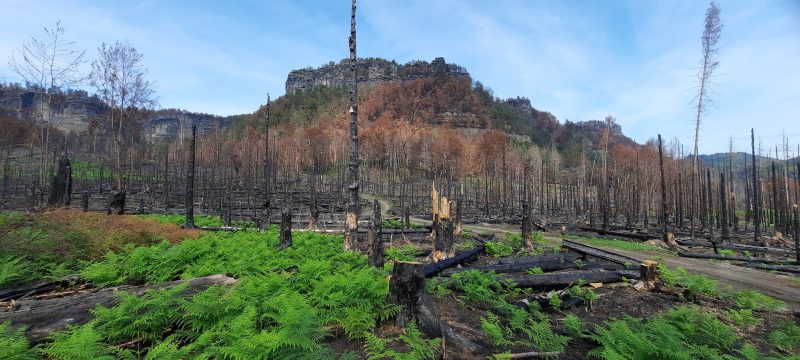
FIRE CAN TRANSFORM LANDSCAPES BEYOND RECOGNITION, BUT IT CAN ALSO TRIGGER FUNDAMENTAL CHANGES
Fires have almost disappeared in temperate regions over the last centuries, but for millennia they shaped the landscape. With the onset of climate change, they are reappearing, and experts are beginning to discuss their role in ecosystems.
A large fire in the summer of 2022, which affected the Bohemian and Saxon Switzerland National Parks, also became an opportunity for unique ecological research – scientists from the Biology Centre of the Czech Academy of Sciences, Jan Evangelista Purkyně University in Ústí nad Labem, and other institutions are monitoring how the burned areas regenerate.
The results are encouraging – nature is recovering quickly, burned areas are being overgrown with vegetation, and the number of animal species, including endangered ones, is increasing. “In the first year after the fire, pioneer vegetation appeared, such as birch, blackberry, and eagle fern,” says Mgr. Jana Müllerová, Ph.D., from the Faculty of Environment at UJEP. “We recorded hundreds of insect and animal species, including those rarely found in the usual landscape. A new beetle species for the Czech Republic – Amara kulti – was even discovered,” adds RNDr. Alena Sucháčková, Ph.D., from the Biology Centre of the Czech Academy of Sciences.
Three years after the largest forest fire in the history of the Czech Republic, an international conference Fire in Central European Ecosystems will take place near the extensive burned area. Around 150 experts from the Czech Republic and across Europe will attend, spending one day directly at the sites affected by the fire.
The event will be held from 6–8 October 2025 at Děčín Castle and will connect scientists, nature conservationists, land managers, and the public.
“People often see fire only as a threat, but in reality, it is a natural process that is part of the development of forests and grasslands and helps increase their diversity. At the conference, we want to show that fire is not the end – nature recovers quickly, and fire can even enrich it. Controlled burning can be a tool for modern nature and landscape protection, as well as an effective fire prevention measure. In short, fire may be a harsh master, but it can also be a good servant,” emphasizes Mgr. Jana Müllerová, Ph.D.
The conference will feature lectures by leading experts, including Anders Granström from Sweden (ecology of boreal forests and fires), Orsolya Valkó from Hungary (author of the EASAC report Changing Wildfires, which addresses how to prevent fires in modern landscapes), and Ondřej Sedláček from Charles University (fire as a tool for nature protection).
“The Bohemian Switzerland National Park has involuntarily become a model area exposed to a large-scale fire. We are constantly looking for ways to prevent such destructive fires to protect human lives and property while fulfilling the mission of the national park, which is to create space for natural development. That is why we also want to connect experts from different parts of Europe who study fire in nature from various perspectives,” concludes Ing. Petr Kříž, Director of the Bohemian Switzerland National Park Administration.
